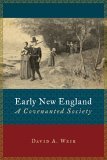Monson, Massachusetts
Burial-Grounds
There are within the limits of the town of Monson no less than ten different places of burial. The first one laid out was in response to a petition of some of the inhabitants of the west part of Brimfield addressed to that town on March 19, 1755, and which has been set forth in full in the history of Brimfield. The lot granted was not laid out until 1760, and was situated half a mile from the meeting-house, near to the road that led to Palmer. Capt. David Hitchcock died in 1762, and was the first person buried in this cemetery, and the first in Monson. Only two persons have been interred there in the last eighty years. The remains of most of the early settlers lie buried beneath its sod, and but two or three crumbling headstones bear witness to the solemn character of the spot. A rail fence was put around the ground by vote of the town in 1774. What is now known as the old or centre burying-ground was laid out about 1780, and originally consisted of less than an acre of land. It lies on the west side of the road, about a hundred yards northwest of Green's Hotel. It contains the remains of many of the first settlers of the town, the places of their interment being marked by stones bearing early dates. It is in a good state of repair, and is substantially inclosed. The Squier burying-ground is situated in the southeasterly part of the town, and contains about two acres of land. It has been in use for upward of one hundred years, but was not declared a public burying-ground until April 4, 1803, when the town voted it as such. The Moultons, Munns, and other early settlers are buried there. It is still one of the best hi the town, and is in use. The Butler burying-ground is located in the southwest part of the town, and contains about an acre of land. It has been established about eighty years. Henry G. Cady, Jonathan Torrey, Capt. Lyman Shaw, the Bennetts, and other well-known citizens are interred there. It is still in use. The Grout burying-ground was laid out by vote of the town, Feb. 4, 1839. It is situated about 20 rods northeast of Joseph Grout's, in the northeast part of the town, and contains 40 square rods of land. John Aldridge, Joseph Grout, and others are buried there. The Gage burying-ground is located about three miles south of the centre, and contains less than an acre of land. It has been in use about thirty years. Philip and Aaron Gage, with others, are interred there. The Day burying-ground lies in the west part of the town, and contains about a quarter of an acre of land. The Catholics of the town have recently purchased seven acres of land in the northeast part of the village, and devoted them to use as a place of interment for the dead. Included within this area is the original or first cemetery of the town, to which reference has been made. A small but neat place of burial is situated in the centre of the village, on the east side of the main street, It was laid out about 1808, and is owned by private individuals. William Norcross was the first person buried there. Deacon Abel Goodell, who died Dec. 14, 1809, at the age of sixty-seven years, was also interred there. By vote of the town, April 8, 1842, the selectmen were directed to purchase three acres of land on the south side of the road, west of Jacob Thompson's house and adjoining J. F. Converse's land, and to fence and prepare the same for a place of burial. One-half was to be sold in lots, and the balance to be a public burying-ground. This place is now known as the new cemetery, and is the one principally in use. Benjamin Fuller was the first person buried there.
| Previous Page | Table of Contents | Next Page |
| Monson Page | | Hampden County | Western Mass History & Genealogy These pages are © Laurel O'Donnell, 2006, all rights reserved
Copying these pages without written permission for the purpose of republishing in print or electronic format is strictly forbidden This page was last updated on 13 Feb 2006 |
